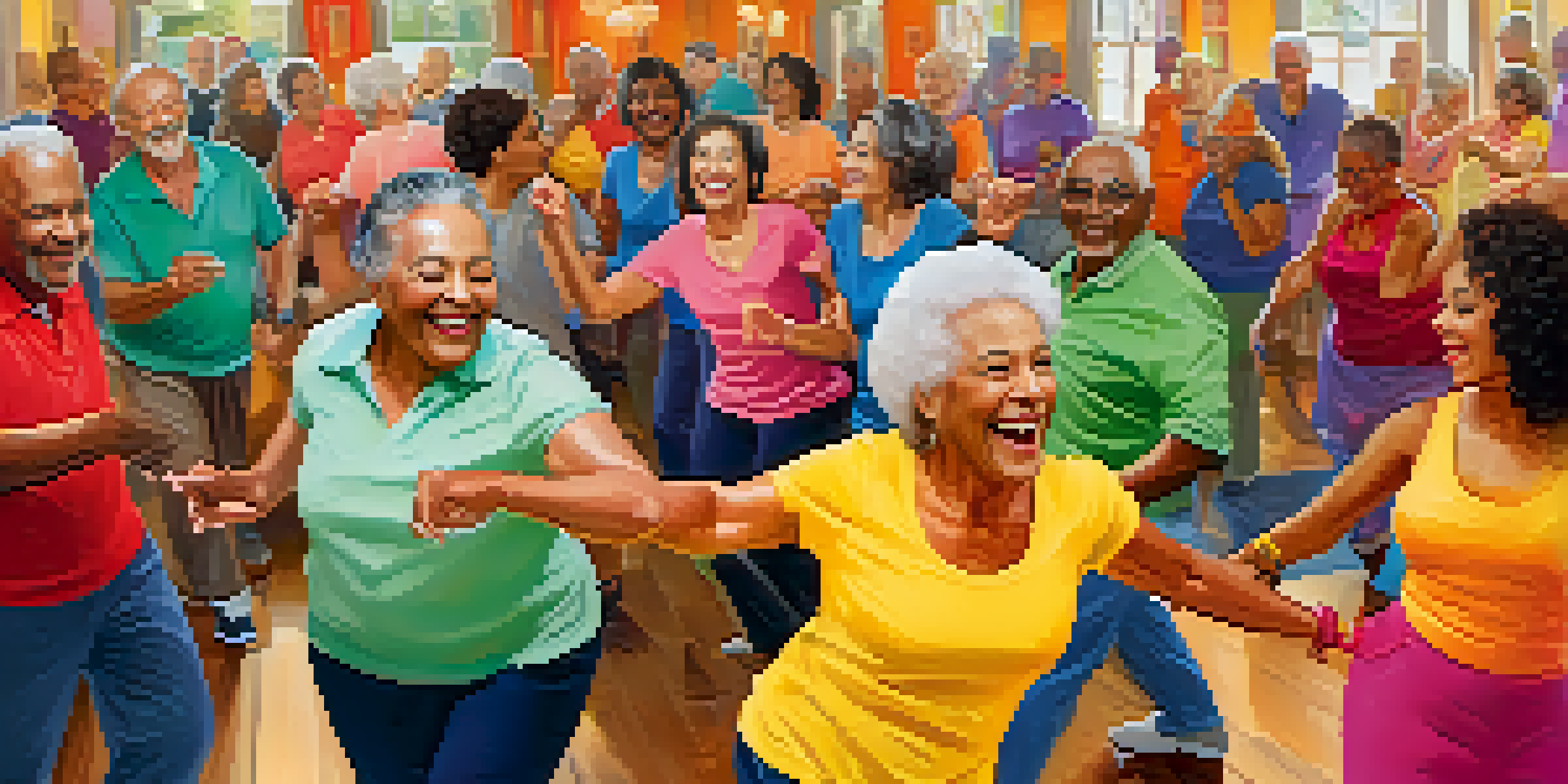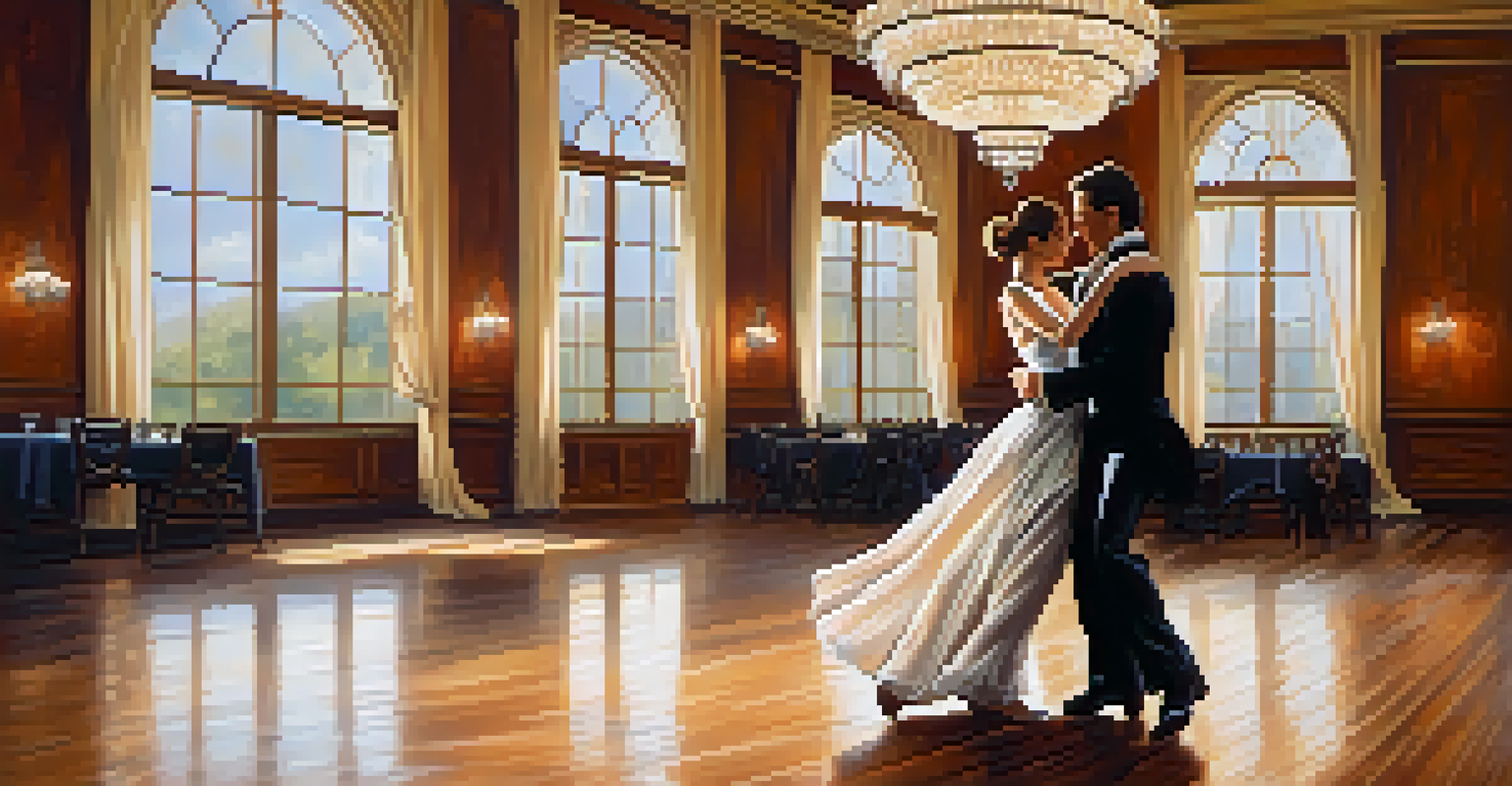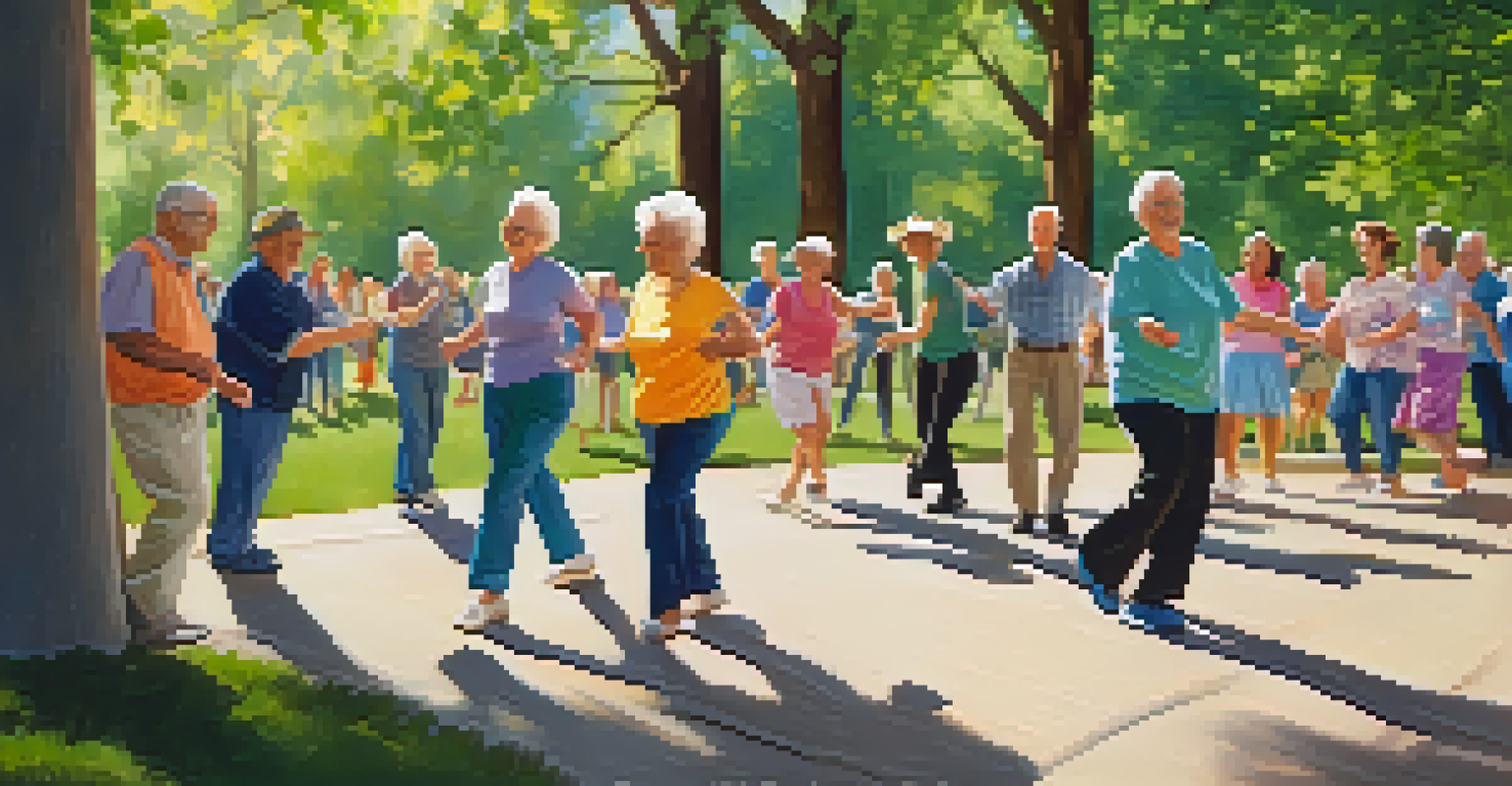Benefits of Dance Classes on Aging Memory and Cognition

The Connection Between Dance and Brain Health
Dance is not just a form of expression; it's a powerful tool for brain health. Engaging in dance classes stimulates various areas of the brain, promoting cognitive function. When we dance, we are not only moving our bodies but also activating memory and coordination, which are crucial as we age.
Dance is the hidden language of the soul.
Studies suggest that physical activities like dance can lead to improved memory retention and cognitive skills. The rhythmic patterns and movements involved in dance require mental processing, which can help keep our minds sharp. It's fascinating how something as enjoyable as dancing can serve as a workout for our brains.
Moreover, the social aspect of dance classes adds an additional layer of cognitive benefits. Interacting with others while learning new steps can enhance communication skills and emotional intelligence, further contributing to overall mental agility.
Dance as a Form of Physical Exercise
When we think of exercise, we often picture the gym or running, but dance classes offer a fun alternative. Regular physical activity is essential for maintaining a healthy brain, and dance provides both aerobic benefits and muscle engagement. This combination promotes better blood flow to the brain, which is vital for cognitive health.

As we age, maintaining physical fitness becomes increasingly important. Dance classes can be tailored to various skill levels and physical abilities, making them accessible for everyone. This inclusivity encourages older adults to stay active and engaged, which is key to preserving memory and cognitive function.
Dance Boosts Brain Health
Engaging in dance stimulates cognitive function and enhances memory as we age.
Additionally, the coordination and balance required in dance help prevent falls, a common concern for the elderly. Therefore, not only does dance contribute to mental acuity, but it also enhances physical resilience.
Memory Improvement Through Dance Learning
Learning new dance routines is a fantastic way to boost memory. When participants take dance classes, they are often required to memorize steps, patterns, and sequences. This cognitive challenge can enhance memory functions, making it easier to retain and recall information.
To watch us dance is to hear our hearts speak.
The process of learning something new stimulates the brain and encourages the formation of new neural connections. This aspect of neuroplasticity is crucial, especially as we age, since it allows for the brain to adapt and grow.
Moreover, the joy and excitement of mastering a dance routine can increase motivation, further enhancing the learning experience. The sense of achievement felt when successfully executing a dance can boost confidence and promote a positive mindset.
Social Interaction and Emotional Well-Being
Dance classes are a fantastic way to foster social connections, which are essential for mental health. Engaging with peers in a dance environment can combat feelings of loneliness and isolation, common issues in aging populations. These social bonds can lead to improved emotional well-being, which is closely linked to cognitive health.
Moreover, sharing laughter and joy during dance can release endorphins, the body’s natural feel-good chemicals. This uplift in mood can significantly impact cognitive function, as a positive mindset often correlates with improved memory and thinking skills.
Physical Fitness Through Dance
Dance classes provide an enjoyable way to improve physical fitness and resilience against falls.
In essence, the community aspect of dance creates a supportive atmosphere that nurtures both mental and emotional health. This holistic approach to well-being makes dance classes a valuable experience for older adults.
Enhancing Coordination and Physical Skills
Dancing requires a level of coordination that can be particularly beneficial for older adults. As we age, our motor skills may decline, but dance provides a fun way to practice and improve these abilities. Regular participation in dance classes can lead to enhanced coordination, balance, and agility.
This improvement in physical skills is not just about dancing; it's about enhancing daily activities. Better coordination can lead to more confidence in walking, climbing stairs, and even participating in other physical activities.
Additionally, the focus required during dance can improve concentration and attention. Participants learn to synchronize their movements with music and their partner, which sharpens cognitive skills associated with coordination.
Creative Expression and Cognitive Flexibility
Dance is a unique form of creative expression that can stimulate cognitive flexibility. This flexibility allows individuals to adapt to new situations and think outside the box, which is crucial as we age. Engaging in creative activities like dance can promote innovative thinking and problem-solving skills.
Through improvisation and interpretation, dancers learn to express themselves in diverse ways. This practice encourages the brain to explore new ideas and perspectives, enhancing overall cognitive function.
Social Connection and Well-Being
Participating in dance fosters social bonds that improve emotional health and combat loneliness.
Furthermore, the ability to express emotions through dance can lead to improved emotional regulation, which is vital for mental health. This creative outlet serves as a powerful reminder of the brain's potential for growth and adaptability.
Conclusion: The Holistic Benefits of Dance Classes
In conclusion, dance classes offer a multitude of benefits for aging memory and cognition. From enhancing physical fitness to promoting social connections, dance is a holistic approach to maintaining brain health. The combination of physical activity, memory challenges, and emotional expression creates a well-rounded experience that nourishes both mind and body.
As we can see, the act of dancing is more than just moving to music; it’s a pathway to cognitive vitality. Encouraging older adults to join dance classes can be a simple yet effective strategy to support mental health and well-being.

So, whether it’s a lively salsa class or a graceful ballroom session, dancing could be the key to unlocking a sharper, healthier mind as we age.